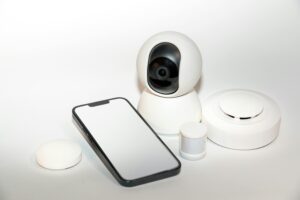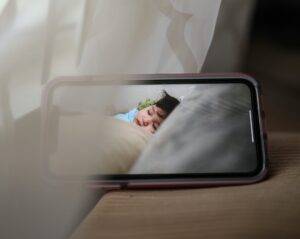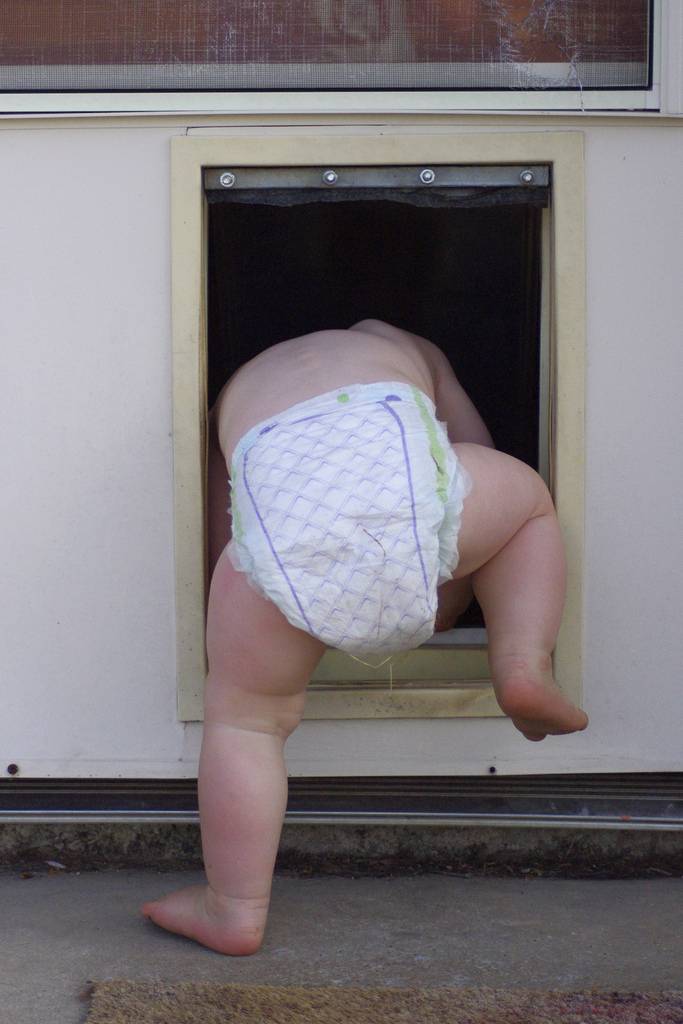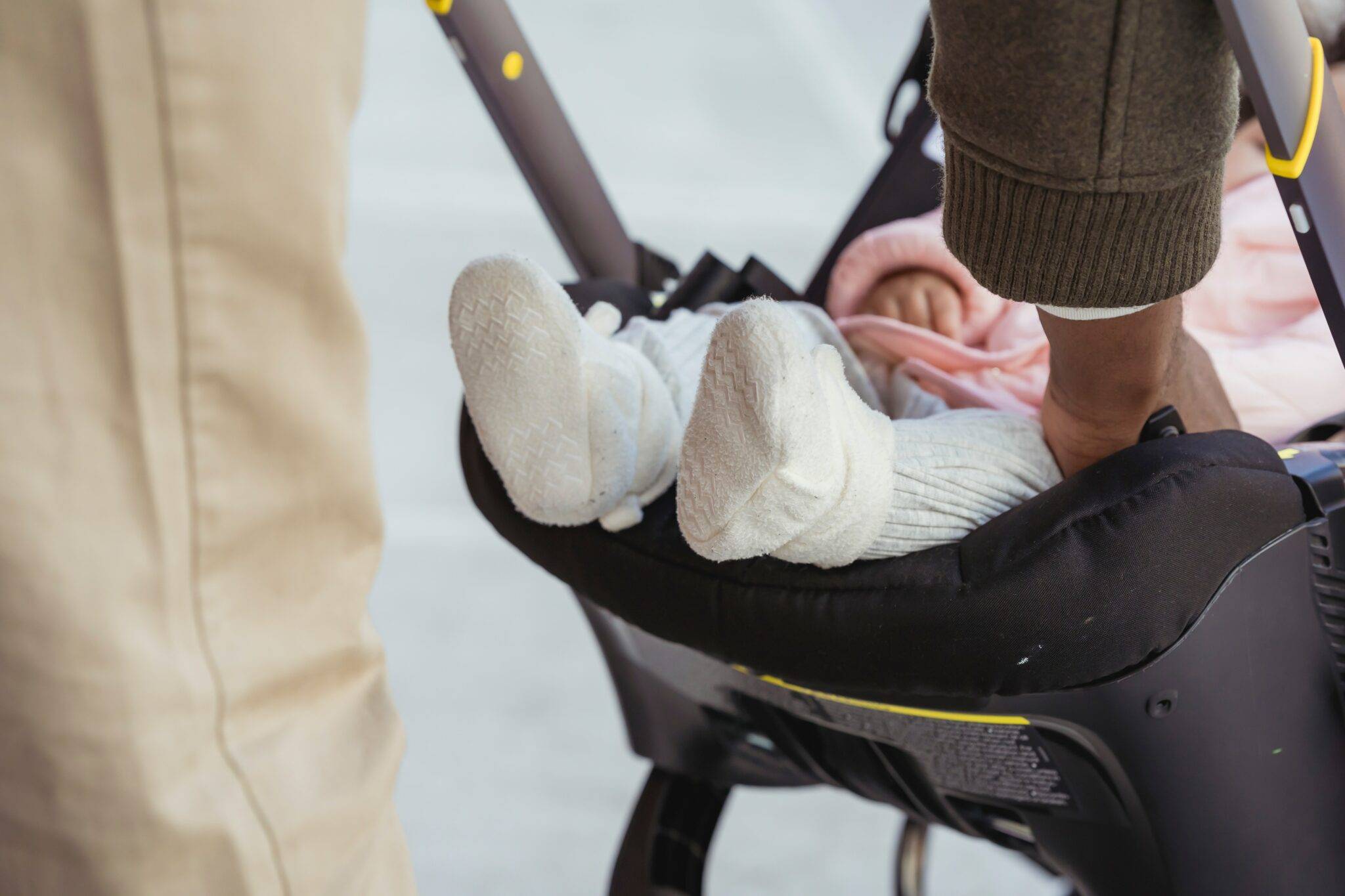When it comes to ensuring your baby’s safety and your peace of mind, a reliable baby monitor can be a game-changer. Whether you’re a first-time parent or adding another little one to your family, choosing the best baby monitor requires understanding the available options, their features, and how they fit into your lifestyle.
This guide will walk you through everything you need to know about baby monitors, from the types available to their features, safety tips, and some of the top-rated models on the market. By the end, you’ll feel confident about selecting the perfect baby monitor for your family’s needs.
Why Baby Monitors are Essential for Parents
A baby monitor acts as an extra set of ears and eyes, allowing you to keep tabs on your baby while you’re in another room. Whether y
our baby is napping during the day or sleeping through the night, a baby monitor ensures you can respond promptly to their needs.
Beyond offering peace of mind, baby monitors allow parents to multitask without worry. You can cook, clean, work, or relax, knowing you
’ll be alerted if your baby wakes, cries, or requires attention. For parents of newborns or infants with health concerns, some advanced monitors even track breathing, movement, and sleep patterns, providing an added layer of reassurance.
The latest monitors come with:
- High-definition video and night vision
- Two-way audio communication (so you can soothe your baby remotely)
- Sleep tracking and breathing monitoring
- Smartphone app integration
- Temperature and humidity sensors
In short, baby monitors aren’t just “walkie-talkies” anymore—they’re a full-on safety and parenting support system. For families balancing work, household duties, and childcare, a high-quality monitor can be a lifesaver.
Features to Look For in a Baby Monitor
When selecting a baby monitor, consider essential features to ensure it meets your family’s needs. Before we dive into the top picks of 2025, let’s go over the features to look for:
- Video Quality: A sharp, clear video feed is a must. Look for at least 1080p resolution with night vision.
- Range: Ensure the monitor covers the distance between your baby’s room and where you’ll typically be. Larger homes may require monitors with extended range capabilities.
Connection Type
- Wi-Fi Monitors let you connect to your phone anywhere, but may raise privacy concerns.
- Non-Wi-Fi Monitors use a secure radio frequency connection, making them safer but less flexible.

Battery Life: Portable monitors with long-lasting batteries offer flexibility. Look for models that provide at least 8-10 hours of use on a single charge.
Night Vision: If you opt for a video monitor, ensure it has night vision capabilities. This feature allows you to see your baby clearly in low-light conditions.
Two-Way Communication: Some monitors allow you to talk to your baby through the device, which can be soothing for your little one and convenient for you.
Smart and Extra Safety Features: Consider whether you want additional functionalities such as breathing monitoring, sleep tracking, room temperature sensors, and cry detection alerts. While these features are helpful, they often come at a higher price.
Ease of Use: Parents don’t have time for complicated setups. Look for intuitive designs.
Types of Baby Monitors: Choosing What Works for You
1. Audio Monitors
Audio monitors are the simplest type of baby monitors. They transmit sound from your baby’s room to a parent unit. These are ideal for parents who want a no-fuss option without the distraction of a video feed.
- Pros: Affordable and easy to use, reliable for detecting sounds like crying or cooing, and long battery life in most models.
- Cons: Limited information; you can only hear, not see, your baby, and no additional features like temperature or movement tracking.
Best For: Parents who want an affordable and straightforward solution.
2. Video Monitors
Video monitors combine sound and visual feeds, allowing you to see your baby in real time. Most models come with a parent unit, and some offer night vision for clear visibility in low-light conditions.
- Pros: Provides both sound and video feeds, features like zoom, pan, and tilt allow better coverage, and offers peace of mind by letting you visually check on your baby.
- Cons: Can be more expensive than audio monitors and requires careful placement for optimal viewing angles.
Best For: Parents who prefer to see as well as hear their baby.
3. Smart Monitors
Smart monitors are the latest evolution in baby monitoring technology. These devices connect to your smartphone or tablet via Wi-Fi, offering advanced features like real-time alerts, breathing and movement monitoring, and remote access to the video feed.
- Pros: Highly customizable with advanced features, can be accessed from anywhere using an app, and tracks metrics like sleep patterns, breathing rates, and room temperature.
- Cons: Relies on a stable Wi-Fi connection, higher price point, and some parents may have privacy
- concerns due to the internet connectivity.
Best For: Tech-savvy parents or those looking for advanced features to monitor their baby’s health and safety.
Top 10 Baby Monitors of 2025
Let’s explore some of the top-rated baby monitors this year, catering to different needs and preferences. They are ranked for safety, convenience, and parent reviews.
1. Nanit Pro 3 Smart Baby Monitor
The Nanit Pro is a smart monitor that goes beyond basic functionality. It has long been a favorite among tech-savvy parents, and the 2025 model is the most advanced yet. It works with an intuitive app that offers personalized insights.
- Key Features:
- Crystal-clear 2K HD video with night vision.
- AI-powered sleep tracking.
- Breathing motion monitoring without wearables
- Tracks room conditions.
- Secure Wi-Fi with encrypted data
- Includes a wall mount or flexible stand.
- Who It’s Best For: This is the gold standard for parents who want smart features plus reliability. Parents interested in tracking their baby’s sleep and health data.
2. Owlet DreamCam 2
Owlet has expanded beyond sleep socks, and their DreamCam 2 is now one of the best monitors available. Parents love the seamless integration with Owlet’s ecosystem.
Highlights:
- Integrated with Owlet’s smart socks (optional)
- HD video with a wide-angle lens
- Tracks sleep patterns and room temperature
- Smartphone alerts for unusual breathing
3. Infant Optics DXR-9 Pro Baby Monitor
This monitor is a favorite among parents who prefer non-Wi-Fi devices for added security.
- Key Features:
- Clear audio and video quality—high-definition 720p display
- 1080p resolution with interchangeable lenses
- Range of up to 1,000 feet
- Expandable to multiple cameras
- Remote pan, tilt, and zoom functions
- Private FHSS connection (no internet needed)
- Long battery life
- Who It’s Best For: Parents who want a reliable, non-Wi-Fi monitor with excellent video quality. Perfect for families who want privacy without Wi-Fi.
4. Miku Pro Plus
The Miku Pro Plus uses military-grade sensors to track breathing and sleep without requiring wearables. A top choice for parents concerned about silent health monitoring.
Highlights:
- Contactless breathing monitoring
- Detailed sleep reports
- Dual speakers for two-way talk
- Encrypted Wi-Fi connection
5. Eufy SpaceView Pro Baby Monitor 2
Eufy’s monitor combines affordability with quality. The Eufy SpaceView Pro is a video monitor that focuses on high-quality visuals and user-friendly features. Its secure connection ensures your baby’s privacy.
- Key Features:
- 2K HD video feed
- 720p HD display with a wide-angle lens
- Large 5-inch parent display
- Pan and tilt camera with wide coverage
- Expandable to support multiple cameras
- Non-Wi-Fi design for enhanced security
- Who It’s Best For: Parents who value privacy and top-notch video quality. Budget-friendly but still powerful.
6. Lollipop Smart Baby Camera
Shaped like a colorful lollipop, this monitor is designed with both style and smarts. With its eye-catching design and portability, the Lollipop Smart Baby Monitor is perfect for parents seeking affordability and convenience. It offers features like the ability to play lullabies remotely.
- Key Features:
- Unique, flexible design that mounts to cribs
- Budget-friendly smart features—cry detection and noise alerts.
- Wi-Fi connectivity for remote access
- Works with Alexa and Google Home.
- Cloud video storage available
- Who It’s Best For: Parents looking for a stylish and functional Wi-Fi-enabled monitor. This is a fun option for modern nurseries.
7. Motorola PIP1510 Connect
Motorola remains a trusted name in baby monitoring. Parents who want the best of both worlds (Wi-Fi and non-Wi-Fi) love this.
Highlights:
- Dual connectivity (Wi-Fi and non-Wi-Fi)
- 1080p HD video
- Two-way talk and lullabies
- Room temperature monitoring
8. Cubo AI Plus 2025 Edition
Cubo AI focuses on safety with AI-powered alerts. Best for parents who want extra safety alerts.
Highlights:
- Alerts for when the baby’s face is covered
- Automatic photo capture of the baby’s milestones
- Clear 2K video with night vision
- Easy smartphone integration
9. VTech RM7766HD Baby Monitor
VTech’s 2025 release offers excellent value. For parents who prefer audio-only options, this stands out for its clear sound quality and user-friendly design.
- Key Features:
- 1080p HD video
- Secure FHSS transmission
- Two-way talk functionality
- DECT 6.0 technology for secure audio transmission
- Wide-angle lens and night vision
- Long-lasting battery
- Budget-friendly price
- Who It’s Best For: Parents who want a no-frills, audio-only monitor. A strong budget-friendly pick.
10. Arlo Baby Monitor 2
Arlo is known for home security cameras, and their baby monitor delivers the same reliability. Great for parents who want extra environmental tracking.
Highlights:
- 2K resolution video
- Air quality sensors (CO₂ and VOCs)
- Soothing music and a night light built-in
- Smart home integration
Safety Tips for Using Baby Monitors
- Place Monitors Safely: Position the monitor away from the crib to prevent your baby from pulling on cords. Cords should be at least 3 feet away. Wall-mount cameras or keep them on a high shelf for better safety.
- Secure Wi-Fi Connections: If using a smart monitor, ensure your home Wi-Fi is password-protected, and choose devices with encrypted signals.
- Regular Maintenance: Test your monitor periodically to ensure it’s functioning correctly. Replace batteries as needed and check for firmware updates in smart monitors to patch security flaws.
- Test Before Bedtime to make sure the monitor works.
- Avoid Over-Reliance: While monitors are helpful, they should not replace regular check-ins with your baby, especially during naps or nighttime.
Which Baby Monitor Is Best for You? 
Baby monitors in 2025 aren’t just gadgets—they’re essential tools for safety, peace of mind, and better sleep for parents. The best baby monitor depends on your specific needs, budget, and preferences. The key is to find one that fits your family’s lifestyle. Prioritize safety, functionality, and ease of use when making your decision.
A baby monitor isn’t just a device or another appliance at home—it’s a tool that helps you care for and connect with your little one, even from another room. For more tips on caring for your baby, check out Omega Pediatrics’ guide on newborn care or learn about safe sleep practices for infants.







